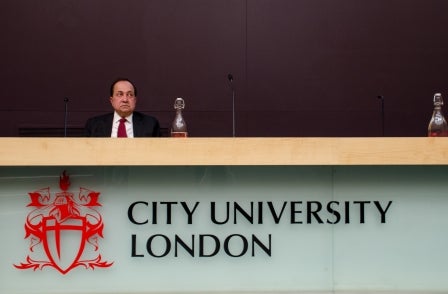
By Narasimhan Ram
There are differing views of the subject. Some external observers consider the country’s news media to be in an enviable position in the developing world, their freedom, space, stability, and security derived from history, constitutional protection, the workings of a democratic political system, and their own rapid growth and expansion over the past quarter-century.
Others, mostly media insiders, believe these advantages are offset to a considerable extent by an illiberal framework of laws and a growing intolerance in politics and society.
Article 19(1)(a) of the Indian Constitution guarantees freedom of speech and expression as a fundamental right. This right, hard won in the freedom struggle against a highly repressive and censorious British Raj, is unamendable.
Freedom of the press is not explicitly mentioned by the Constitution but the Supreme Court has, through judicial interpretation, held that freedom of the press is a combination of two freedoms – Article 19(1)(a) and Article 19(1)(g), ‘the freedom to practice any profession, or to carry on any occupation, trade or business’.
Unfortunately, freedom of speech and expression is hemmed in, and to a significant extent undone, by
Article 19(2). This provides for restrictions on the fundamental right by law – some reasonable, most not. Notable among the unreasonable restrictions that remain on the statute book or in practice are the
law of criminal defamation, the undefined power of contempt of court, uncodified legislative privilege, the outrageous law of sedition, 124A of the Indian Penal Code, other illiberal provisions of the IPC (especially 153A), the Unlawful Activities (Prevention) Act, and other draconian laws enacted in the name of fighting extremism and terrorism.
Further, media freedom in India is considered ‘incomplete’ because the print media and the broadcast media have not been placed on an equal constitutional and legal footing. The higher courts have not judged it necessary to confer Article 19(1)(a) protection on radio and television.
Newspapers in independent India have functioned under a legal regime of registration; since there is no licensing, they cannot be de-licensed. By contrast, private satellite television channels and FM radio stations function under a licensing system and can be taken off the air for alleged serious transgressions of the rules laid down by the Ministry of Information and Broadcasting.
Paradoxically, while newspapers have the Press Council watchdog, there is no legal regulatory framework for private satellite television channels, which have attracted growing public complaint that they are a law unto themselves.
Add to this the fact that the huge terrestrial television network remains a state monopoly and the private FM radio stations are not allowed to do news and current affairs, which remain the monopoly of All India Radio, and you have an idea of how complicated it gets.
Free speech has come under serious pressure in India. Consider these examples from the past quarter-century. Carrying out several acts of localized violence and intimidation against journalists, writers, historians, cartoonists, artists, activists, and others.
Assaulting journalists and sending toughs to stone, smash, and burn the offices of media organizations, here and there. Piling on criminal defamation cases against journalists. Blocking text or sms services in the name of law and order or public order. Notifying illiberal rules. Threatening to tame the social media.
Using the sedition law against the writer Arundhati Roy for something she had not even said. Imprisoning a cartoonist for sedition, with the result that the Indian criminal justice system has itself become a cartoon gone viral on the worldwide web.
This situation demands well-considered, progressive reform. The aim of such reform must be to expand the scope of media freedom – but also to ensure professional and social accountability. But it is well to remember that media freedom cannot survive, let alone thrive, unless free speech can be safeguarded in society at large.
This is an extract from the James Cameron Memorial Lecture at City University London.
Email pged@pressgazette.co.uk to point out mistakes, provide story tips or send in a letter for publication on our "Letters Page" blog
